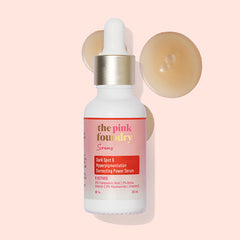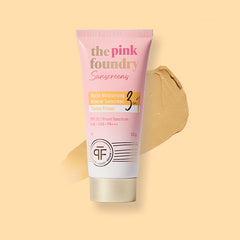Dandiya Makeup Essentials: Must-Have Products for Long-Lasting Looks
The festive season of Navratri and Garba nights is almost here! It is time to get your makeup essentials to create fabulous Dandiya looks that will last longer as you participate in the Garba dance and seek divine blessings.
Vibrant, colourful outfits, jingling accessories, and lively dandiya raas dances make Navratri all about enthusiastically celebrating the divine feminine power. A perfect Dandiya makeup look is an essential part of the Navratra festivities. Everyone wants makeup that makes them feel festive and stays fresh for hours while they enjoy the festivities.
In this blog, we will discuss the easy Dandiya makeup ideas and tips you can use to create a flawless and long-lasting glam look. From must-have makeup products to step-by-step tutorials for stunning Dandiya looks, we will cover it all!
What is Dandiya Makeup?
Dandiya makeup is glamorous, bold, and colourful, perfect for Navratri or Garba nights. It complements the vibrant outfits and accessories worn during these festivities.
The aim is to create a bright, eye-catching makeup look that stays fresh for long hours as you participate in the community spiritual night dance. The whole objective is to seek the blessings of the divine feminine energy.
In addition to spirituality, Garba nights have a touch of glamour that adds flavour to the whole experience. Thus, wearing waterproof and smudge-proof makeup products is considered a must!
There is no shortage of options, from bold-looking lips to smoky eyes, glittery accents to bright blushes. Dandiya makeup allows you to get creative with bright and popping hues that exude the energy and vigour of this nine-night spiritual festival.
You can take inspiration from your outfit colours and accessories when creating your Dandiya look. For example, match your eyeshadow or lip shade with your dress or jewellery for a coordinated festive look.
Also read: How To Achieve The Perfect No Makeup Look
Easy Dandiya Makeup Looks - Step by Step
Here are a few easy Dandiya makeup ideas you can try this Navratri season for gorgeous festive looks:
1. The Glam Bollywood Look
- Prepare your skin well. Cleanse, tone, and moisturise adequately. You could use a primer for extra staying power for your makeup. The Pink Foundry's Waterlight Gel Moisturiser is a must-have to moisturise your skin.
- Apply foundation and concealer to even out the skin tone and cover blemishes.
- Define your brows using brow pencil and setting gel.
- Prime the eyelids and apply shimmer champagne eyeshadow all over the eyelids.
- Apply winged black eyeliner and coat the lashes with volumizing mascara.
- Sweep rose gold highlighter on your cheekbones, bridge of the nose, and cupid's bow.
- Line your lips with red lip liner and fill in with matching red lipstick.
- Set makeup with translucent powder to lock it in place.
2. The Purple Passion Look
- Prep and prime skin. To prime your skin for a bright and glowing effect, you could use The Pink Foundry's Pore Refining & Soothing Clay Mask with Cica Extract.
- Apply a golden foundation to get a soft glow.
- Conceal your under-eye circles and blemishes.
- Sweep a medium purple eyeshadow across the lids and blend well.
- Apply black kohl eyeliner on the upper and lower waterlines.
- Use 2-3 coats of volumizing mascara in black.
- Apply a rosy pink blush on the cheeks.
- Apply dark purple lipstick and finish with a touch of lip gloss in the centre.
3. The Glittery Goddess Look
- Moisturize and prepare your facial skin using face wash, toner, and moisturizer. You can also consider applying The Pink Foundry's Mineral Matte Tinted Sunscreen to protect your face from bright festive lights.
- Apply a liquid highlighter-like strobe cream on your cheekbones.
- Use foundation and concealer to even out your skin tone.
- Fill in your brows using a brow definer pencil for a defined look.
- Apply gold and rose gold pressed glitters on the eyelids using glitter glue.
- Apply generous coats of waterproof mascara.
- Dust coral blush on the apples of your cheeks.
- Apply peach lipstick and top it up with a golden lip gloss.
Also read: What Is SPF in Sunscreen?
Makeup Tips for Navratri Makeup
Here are some handy makeup tips to ensure your Dandiya looks longer:
Choose Long-wear Makeup Formulas
The key is to choose sweat-proof, transfer-proof, and waterproof makeup products that can last for hours without fading, smudging or budging. You should opt for long-wear lipsticks, smudge-proof eyeliners, and waterproof mascara.
Prepare Your Skin Properly
Moisturise and prepare your skin well before applying makeup. Use a primer and a setting spray to make your makeup last flawlessly for longer hours.
Apply Base Products Evenly
The base must be perfect for your makeup to look flawless. Apply foundation and concealer, and compact evenly. Set them with a translucent powder to control excess oiliness.
Use Matte Textures
To prevent makeup meltdowns, you can prefer using more matte textures rather than shimmery textures. Shimmery textures tend to fade faster.
Set With Translucent Powder
Generously dust your face with a translucent powder post-makeup application to lock everything in place. This can help you control the shine and sweat.
Use Waterproof Eyeliners
Use waterproof kajal, gel eyeliners and liquid liners instead of pencil liners. They stay put without smudging or transferring.
Take Makeup Essentials With You
Carry essentials like compact lipstick and eyeliner to touch up if needed. Blotting paper can help you remove excess oil and refresh the makeup.
Conclusion
With the right tips and step-by-step Dandiya makeup tutorials, you can create stunning Navratri looks that last. Bright colours, shimmery textures, and creative eye makeup like cut-crease eyes or graphic liner can help you stand out from the crowd.
You can complete your look with accessories like statement earrings, necklaces, and 'maang tikkas'. All this can help you get ready to rock the dandiya raas in style! Don't forget to take makeup touchup essentials with you to refresh your look on the go.













































